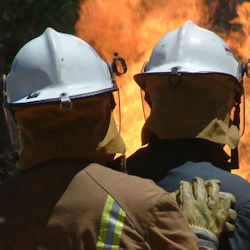Fire Prevention Plans (FPP)
Introduction
The most important reason to have a Fire Prevention Plan (FPP) is to eliminate the causes of fire, prevent loss of life, and prevent loss of property by fire. If an employer plans to have one or more employees try to control a small, manageable fire while others leave the area, both an Emergency Action Plan (EAP) and an FPP are required by OSHA. An effective FPP does all of the following:
- It provides employees with information and guidelines that will assist them in recognizing, reporting, and controlling fire hazards.
- It identifies materials that are potential fire hazards and their proper handling and storage procedures.
- It distinguishes potential ignition sources and the proper control procedures of those materials.
- The plan describes fire protection equipment and/or systems used to control fire hazards.
- It identifies persons responsible for maintaining the equipment and systems installed to prevent or control ignition of fires.
- The FPP identifies persons responsible for the control and accumulation of flammable or combustible material.
- It describes good housekeeping procedures necessary to insure the control of accumulated flammable and combustible waste material and residues to avoid a fire emergency.
- The plan provides training to employees with regard to fire hazards to which they may be exposed.
Knowledge Check Choose the best answer for the question.
2-1. Which of the following emergency preparedness plans must the employer develop if the intent is to require one or more employees stay behind to control (fight) a controllable fire?
You forgot to answer the question!

